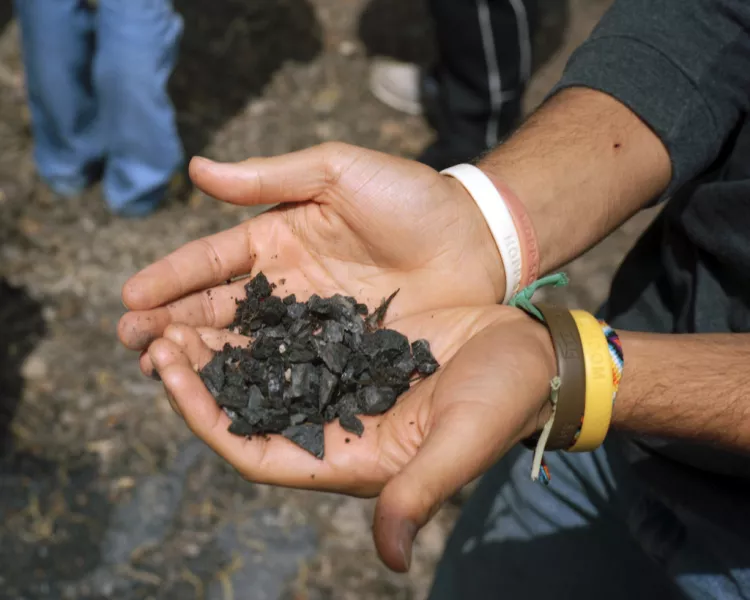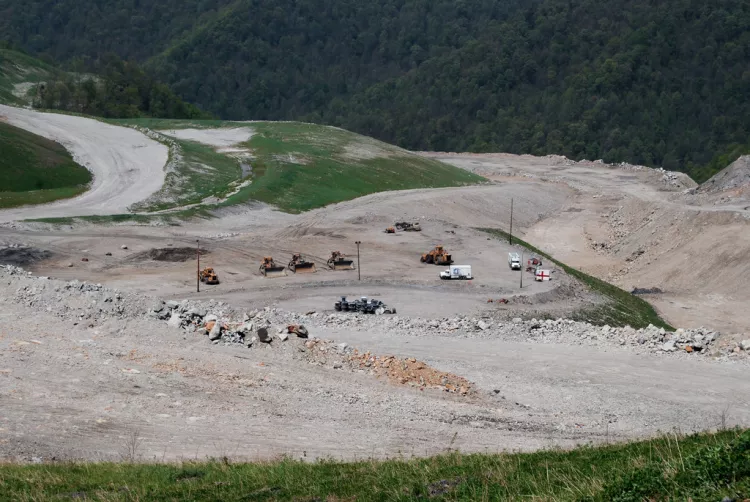Comparison Against Other Fossil Fuels

United States Energy Sources
The United States generates most of its energy through the burning of fossil fuels. Not only are fossil fuels a non-renewable resource, they pollute the environment and contribute to climate change. It is important that the U.S. becomes less reliant on fossil fuels and begins to use primarily renewable energy sources. Natural gas is a major source of energy in the U.S. (Figure 1, data from EIA, 2008) and is used by several sectors (Figure 2, data from EIA, 2008).


The Marcellus Shale contains 50 trillion cubic feet of extractable natural gas, which can supply the United States with 2 years of gas assuming current consumption rates are constant1.
Comparison of Emissions for Fuel Sources
In terms of emissions from power plant sources, natural gas is the cleanest fossil fuel. Using data collected from the Energy Information Administration (EIA) division of the Department of Energy (DOE), the emissions of several stack gasses are compared for natural gas, oil, and coal. In addition to the reduction in CO2 emissions, natural gas does not have significant emissions of nitrogen oxides and sulfur dioxide.
However, leaks of methane (CH4) from natural gas pipelines may amount to a significant additional source of greenhouse gas emissions. Methane contributes more to climate change than CO2 on a per pound basis, so even small leaks of methane may make natural gas contribute more to climate change than coal. A study in 1997 by the EPA and GRI estimated that the decreased CO2 emissions from natural gas outweigh any greenhouse gas emissions from methaneane leaks2. It is unclear if these estimates still hold for current gas production, but in 1997 it was estimated that natural gas leaks account for 19-21% of the U.S. anthropocentric methane emissions3. More conclusive studies are necessary before making clear comparisons between the climate change effects of natural gas and other fossil fuels.
| Source (lbs/Billion Btu) | Percent Emissions in Natural Gas | ||||
|---|---|---|---|---|---|
| Pollutant | Natural Gas | Oil | Coal | Percent Oil | Percent Coal |
| Carbon Dioxide | 117,000 | 164,000 | 208,000 | 71 | 56 |
| Carbon Monoxide | 40 | 33 | 208 | 21 | 19 |
| Nitrogen Oxides | 92 | 448 | 457 | 21 | 20 |
| Sulfur Dioxides | 0.6 | 1122 | 2591 | 0.05 | 0.02 |
| Particulates | 7 | 84 | 2744 | 8.33 | 0.26 |
| Source: EIA 1998 | |||||
Water withdraws
Powerplants require large volumes of clean freshwater for cooling plant equipment. In the Susquehanna Valley, PA, power generation uses 150 million gallons of water per day. Projected peak water use for shale gas drilling in this area is only 8.5 million gallons of water per day.4
Probability of failure
In the 1980's, the American Petroleum Institute investigated the probability of injected fluids impacting underground sources of drinking water (USDW). Assuming that well casing construction is adequate, the probability of failure was estimated to be between 2 x 10-5 and 2 x 10-8. Due to new advances in well construction technology and taking into account injection conditions, the probability that a well impacts a USDW is estimated to be even less than 2 x 10-8. Other possible avenues for contamination of USDWs include failure of the lined fracking liquids containment ponds. The probability of failure is expected to be higher, but not known.
Other Environmental Concerns
In general, it is more environmentally friendly to extract and burn natural gas than coal. While other fossil fuels are sometimes more damaging and polluting, natural gas production through hydraulic fracturing comes with many additional negative environmental consequences.
Environmental Impacts of Coal

Coal, West Virginia. Photo by Blaine O'Neill 2010.
Water Pollution
Coal extraction and burning contribute substantially to water pollution. Clean Air Act permitting rules require coal fired power plants to remove hazardous chemicals from the flue gas. These chemicals are removed using scrubbers, which take the flue gas and remove pollutants into water. Power plant operators are treat this water and are given a discharge permit through the Clean Water Act to discharge into a local waterway. Common contaminants of concern in power plant waste water include arsenic, aluminum, boron, chromium, manganese, nickel, and lead. A New York Times analysis of EPA records found that many harmful pollutants that are found in power plant waste water effluent discharges are not regulated or are regulated only in certain isolated cases.In addition to the spotty regulation of pollutants in the effluent, enforcement of the terms of the discharge permit has been shown to be lax. For instance, the Times investigation found many instances of arsenic entering waterways at concentrations exceeding 18 times the federal drinking water standard.6
Acid Rain
Unlike natural gas, emissions from coal and oil can cause acid rain, which is formed when sulfur dioxide and nitrogen oxides react with hydroxyl radicals in the environment.
Acid Mine Drainage
Another impact of coal mining and extraction on regional water quality is the runoff--called Acid Mine Drainage (AMD)--from active and retired coal mines, and is the most common non-point source pollutant in the Mid Atlantic region. AMD is formed when pyrite reacts with air and water to form sulfuric acid and dissolved iron. This can cause red, yellow, or orange colored sediment in streambeds and dissolve other heavy metals that then are introduced into surface water and groundwater supplies. Over 4,000 miles of streams in the Mid Atlantic region have been impacted by AMD. Additionally, AMD has killed fish and other aquatic wildlife and impacted drinking water supplies.7
Mountaintop Removal

Mountaintop Removal, Coal Strip Mining, West Virginia. Photo by Blaine O'Neill 2010
There has been a recent increase in mountaintop coal mining in the United States. This technique involves clearing forests and topsoil from mountains and then using explosives to gain access to coal buried underneath. Mountaintop removal destroys tracts of deciduous forest and leads to increased runoff and habitat destruction. When valleys are filled with the debris produced by mountaintop removal, headwaters can be buried, aquatic ecosystems are damaged, and downstream water becomes heavily polluted. This water pollution is a threat to organisms, ecosystem functioning, and human health.8
References
1. Plank, et al. Hancock and the Marcellus Shale. New York: Columbia University Urban Design Lab, 2009. Print.
2. Harrison, M.R., T.M. Shires, J.K. Wessels, and R.M. Cowgill. 1997. Methane Emissions from the Natural Gas Industry. United States Environmental Protection Agency: National Risk Management Research Laboratory.
3. Kirchgessner, D.A., R.A. Lott, R.M. Cowgill, M.R. Harrison, T.M. Shires. Estimate of methane emissions from the U.S. natural gas industry. Chemosphere. Volume 35, Issue 6, September 1997, Pages 1365-1390
4. United States Department of Energy (DOE). "Modern Shale Gas Development in the United States: A Primer." April 2009. http://www.dep.state.pa.us/dep/deputate/minres/oilgas/US_Dept_Energy_Report_Shale_Gas_Primer_2009.pdf
6. Duhigg, Charles. "Cleaning the Air at the Expense of Waterways." New York Times. 12 October, 2009. Energy Information Administration, 2008. Annual Energy Review. www.eia.doe.gov/aer
7. Sweeney, Dan. "What is Acid Mine Drainage" US EPA, Region III. http://www.sosbluewaters.org/epa-what-is-acid-mine-drainage%5B1%5D.pdf
8. Palmer, M.A., E.S. Bernhardt, W.H. Schlesinger, K.N. Eshleman, E. Foufoula-Georgiou, M.S. Hendryx, A.D. Lemly, G.E. Likens, O.L. Loucks, M.E. Power, P.S. White, and P.R. Wilcock. 2010. Mountaintop Mining Consequences. Science 327: 148-149.



